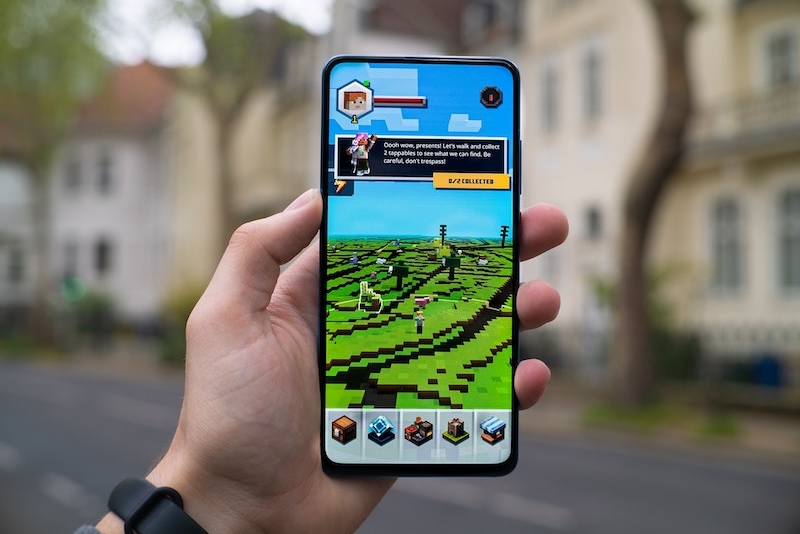Minecraft: Building a New Reality Via the Digital World
 When thinking of Minecraft most people will associate it with kids playing something akin to digital Legos, building worlds and if everything goes according to plan, defeating the Ender Dragon. At its core, this view effectively captures the game at the surface level. Partnering with U.N.-Habitat, Minecraft developer Mojang has harnessed the game concept and applied it to sustainable solutions for developing public space and addressing global Sustainable Development Goals (SDGs).
When thinking of Minecraft most people will associate it with kids playing something akin to digital Legos, building worlds and if everything goes according to plan, defeating the Ender Dragon. At its core, this view effectively captures the game at the surface level. Partnering with U.N.-Habitat, Minecraft developer Mojang has harnessed the game concept and applied it to sustainable solutions for developing public space and addressing global Sustainable Development Goals (SDGs).
Since 2012, the aim has been to integrate Minecraft into urban planning on a local level, prioritizing the involvement of community members, particularly those that lack a voice in public development initiatives such as women, children, refugees and the elderly. The space they are working with is for the people and designed by the people. Behind the success of the Block by Block methodology lies the simplicity of Minecraft, providing an exceptionally effective lens for visualizing a three-dimensional environment that an untrained eye can make sense of, and propter hoc contribute to.
Block By Block
Pilot ventures in Nairobi and Mumbai in 2013 evolved the methodology into what it is today, built on the central tenet of collaboration. Block by Block provides community residents with the training, tools and platforms to develop and share their ideas on how best to transform public space. The exchange of ideas broadens the considerations of all those involved in the collaborative planning process.
Co-created public spaces come into existence, designed by different people and as such take into consideration the needs and concerns of all those involved in the process, resulting in a ubiquitously accommodating locality. Furthermore, what develops as a by-product is a shared sense of ownership and responsibility for the area, increasing the likelihood of maintenance and endurance, whilst simultaneously strengthening the bonds of the community.
Block by Block selects projects based on financial sustainability, accessibility and potential impact. They tend to target youth empowerment, refugee rights, climate change, accessibility, cultural heritage, social inclusion and human rights involving health and safety.
Kosovo
Following the success of a 2015 project in Pristina, Kosovo, that saw the transformation of an abandoned marketplace into a vibrant public space with a range of facilities including children’s playgrounds and Kosovo’s first skatepark, the Block by Block methodology was implemented once more in Mitrovica, some 40 km north of Pristina.
Located on the banks of the Iber river and divided by The New Bridge, the administrative center of the district is burdened by the ethnic divisions between the Serbian and Albanian communities on either side of the river. A symbol of division, the bridge separates the 80,000 Kosovo Albanians living in the north and the community of 20,000 Serbians in the south. In 2016, Block by Block hosted a workshop bringing together residents of both communities to explore ways how to transform the area and collaboratively design their ideas using Minecraft. The approach aimed to negate the divisions between the communities, changing social attitudes towards the city’s unity through democratizing urban planning’s development process. Construction began in 2017, focused on community interaction and urban redevelopment and has had knock-on effects on intercity cooperation to bring about enduring changes across Kosovo’s socio economic landscape.
Nepal
Dey Pukhu, literally translated to “state pond,” as found in the Kirtipur settlement of the Kathmandu Valley in Nepal, is as one would expect, a pond, typically used for daily gathering and steeped in tradition, having been designed for socio-religious functions. Rapid urbanization across the area threatened the water systems and affected the use of Dey Pukhu for social and traditional gatherings, with other public spaces similarly experiencing some form of deterioration as well. In 2013 Block by Block selected it for restoration with the aim to sustainably revitalize the area and for the methodology to gain traction and lead to further development initiatives across Nepal.
Gathering local stakeholders to propose ideas for restoration and development, the initiative noted the rise in youth engagement with the project and the notion of public space. As Pontus Westberg of U.N.-Habitat outlined, the young people’s confidence, effort and pride in their work was perhaps the most rewarding outcome from the project. The positive response led to further development programs put in place across the Kathmandu metropolitan area.
Noteworthy is the 2015 Kirtipur project that proposed the development of a site with a school, temple and a water system amidst large open areas of green and vegetation. Following designs and finalized models of the site, the earthquake hit Nepal in April 2015, delaying implementation. U.N.-Habitat allocated $50,000 in emergency response, repairing a damaged local school and providing essentials for survival including water tanks and emergency shelter. By June 2016 the project was running again, with a trash-covered hillside converted into an open park with recreational space and access to clean water as well as a Public Space Revitalisation Plan put in place for the entire municipality of Kirtipur.
Successful Stories
The Block by Block applied its methodology to other cities across the Kathmandu Valley and is active in over 35 countries. The examples above have set off a chain reaction in the areas of implementation. More recent projects include the likes of public gardens as safe spaces for women and children in Beit Lahia. The successes are a momentous use of technology for the public good and make one wonder what other global concerns can have a solution in something as simple and commonplace as video games.
– Bojan Ivancic
Photo: Unsplash
